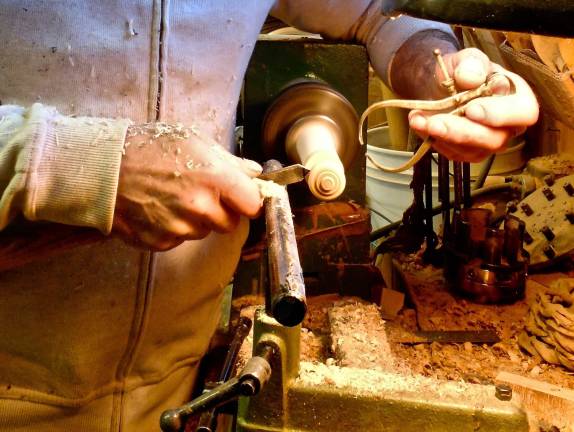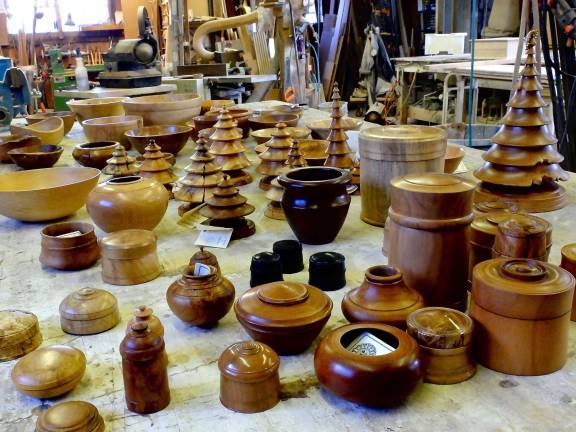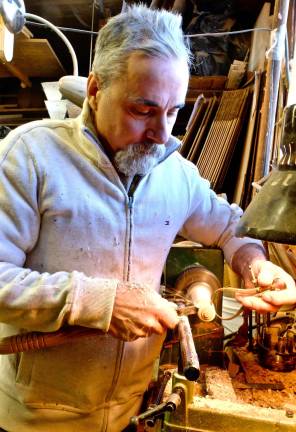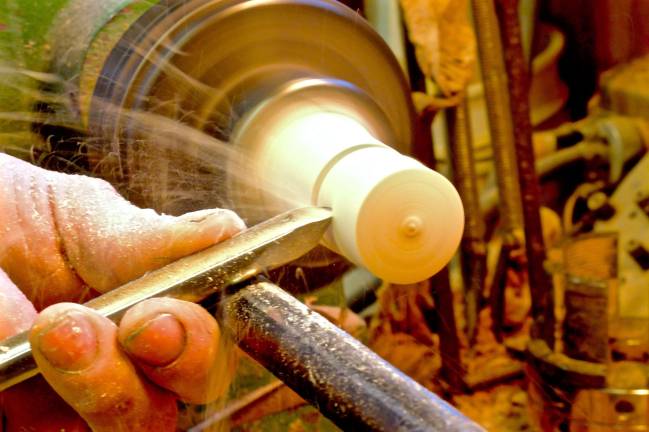From cradle to lathe




Tom Andreas tramps through the woods looking for hidden treasure. It could come in the form of a downed limb from a maple or cherry tree.
“Some of the storms have been very good to me,” he said, talking excitedly about finding a piece of seasoned apple or pear wood. “I like hard, dense wood. I love the wood that most woodworkers don’t want: twisty, gnarled pieces.”
The woodturner uses a small chainsaw to cut a length of black walnut, seeing in its depths a polished cylindrical box. But Andreas won’t truly know what he’s got until he cuts into the wood on his lathe in an 1840s post and beam barn that he calls his playground.
Andreas set off on an academic career in math and science, but found it impossible to ignore the visions of wood — surface, color, texture — that dogged him in his early 20s. There was, he explains, “a real emotional connection.” He grew up in an old school Italian family, surrounded by music and watching his brother, a skilled woodworker. One of eight kids, Andreas learned to figure things out for himself from an early age, a trait that served him well when he started his own cabinetry business, Sunrise Woodwork.
His first attempt at turning wood was a cradle for his daughter, copied from a book of colonial pilgrim furniture. “It had all the knobs and spindles and I’m amazed I got through it because I knew absolutely nothing. When the recession hit and I wasn’t building so many libraries and cabinetry, I had time to get into it.” After hundreds of hours at the lathe, Andreas can turn out a wide range of products, so long as they’re symmetrical around the axis of rotation. He grinds his own gouges or curved chisels to obtain specific angles. Often he’ll choose a piece of spalted wood. (Once wood begins to decay it becomes colonized by fungi, and the wood takes on interesting patterns and variations in color.)
In addition to precise and skillful use of tools, knowledge of the nature of wood is essential. For example, when carving a bowl, Andreas likes to use green wood that’s easier to cut. But when making a box lid that must fit snugly, the wood needs to be dry so there’s no chance for shrinkage. Sometimes the very defects that attract him to a piece of wood can also prove risky. He can hit a knot and the whole piece can break apart.
“There’s a small margin between success and failure,” Andreas said. The payoff comes when he uses the friction from the lathe to melt beeswax on a finished piece, and watches the grain emerge. “I just want to get it off the lathe and hold it,” he said.
Whether he’s turning replacement drawer pulls for an antique desk or building a cabinet that will house an architect’s drawings, Andreas is conscious of making something that may well outlast him. “Part of myself is in it,” though, so in a way, his lathe is his ticket to immortality.